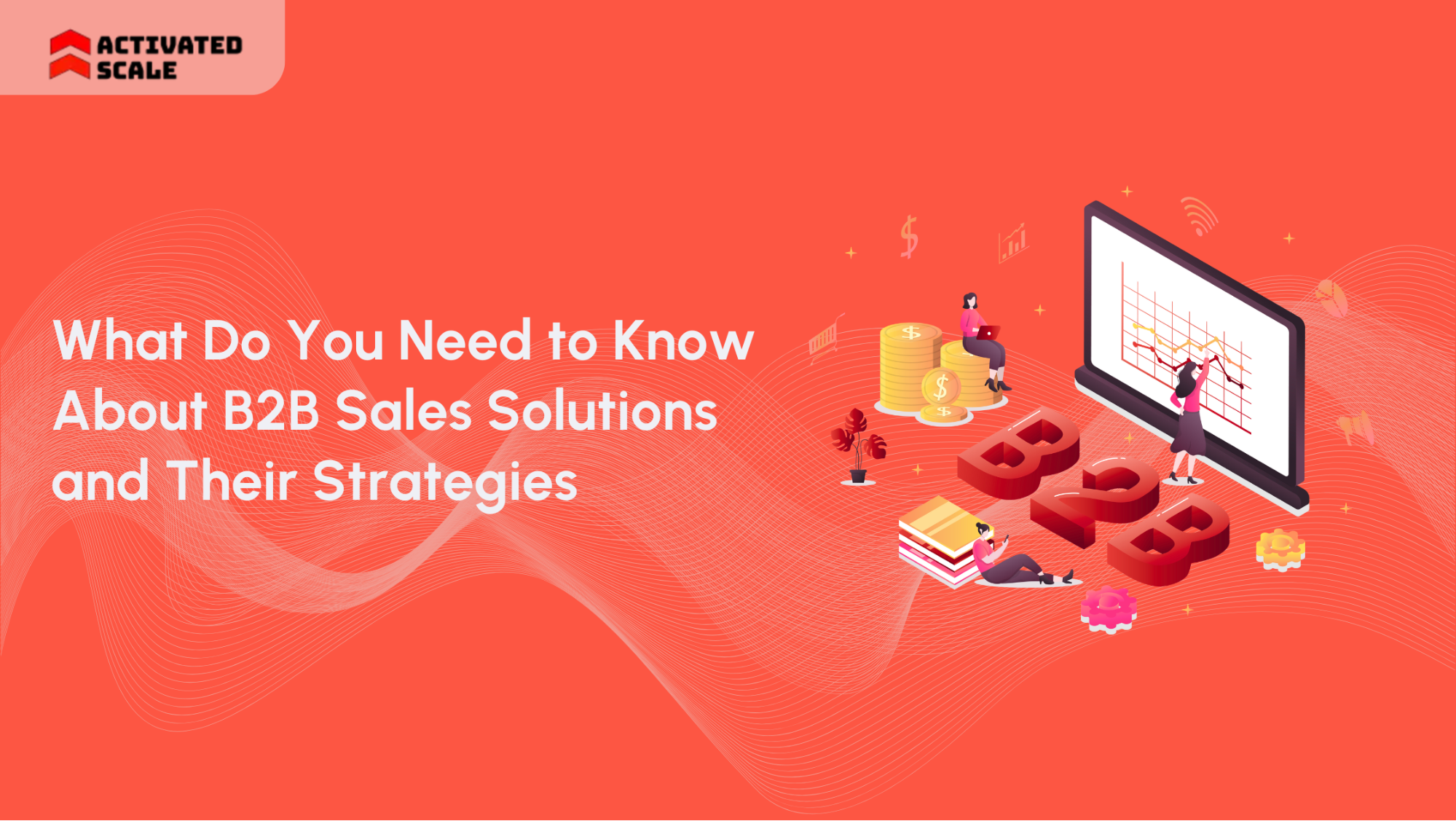Outbound sales can feel like walking into a room full of strangers and convincing them to listen. It’s a discipline built on persistence, sharp insight, and clear, relevant messaging that cuts through noise.
Unlike reactive selling, this proactive approach demands strategic targeting and sustained effort to turn cold prospects into qualified leads. Getting outbound sales means refining each step, from research to closing, with precision and adaptability.
In this guide, the key steps and strategies to run successful outbound sales campaigns will be laid out, offering actionable knowledge for today’s sales professionals.
Key Takeaway
- Outbound Sales Needs Proactive Outreach: Success relies on cold calls, emails, and social touches with personalized, value-first messaging to spark interest and build prospect relationships.
- Strong Prospecting Builds Results: Clear ICPs, verified data, and clean lists keep outreach targeted, reducing wasted effort and improving conversion chances.
- Metrics Drive Smart Adjustments: Tracking pipeline speed, churn, and revenue per touch identifies high-impact channels and prevents energy wasted on low-yield outreach.
- Fractional Talent Scales Fast: Activated Scale’s SDRs and AEs provide quick, flexible sales support to boost pipelines without the cost or risk of long-term hiring.
What is Outbound Sales?
Outbound sales is a proactive sales approach where representatives initiate contact with potential customers through various communication channels. The goal is to directly engage prospects who have not expressed prior interest, aiming to generate leads and create sales opportunities. This method focuses on targeted outreach rather than waiting for inbound inquiries.
Types of Outbound Sales Strategy:
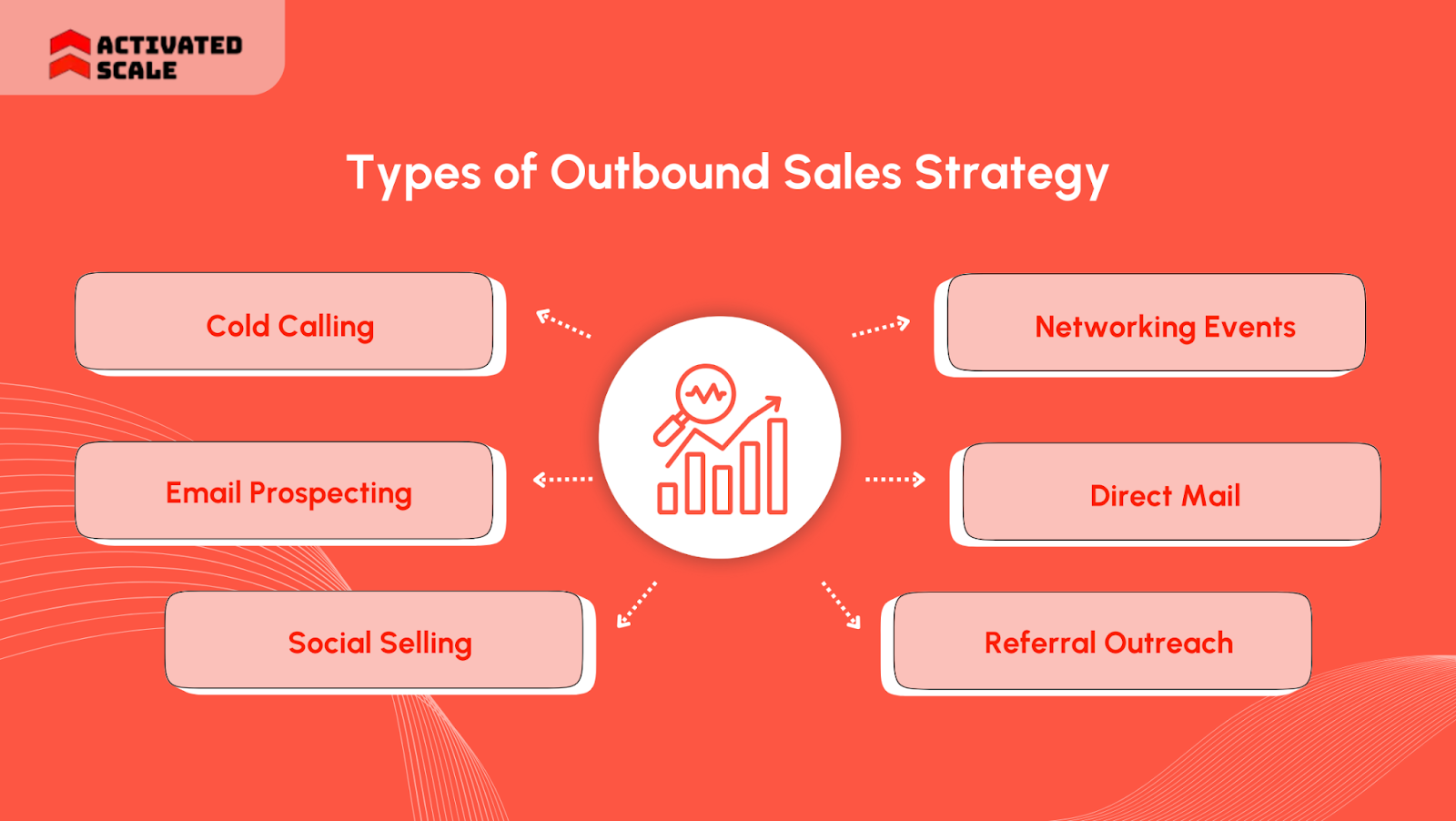
Here are the main types of outbound sales to know:
- Cold Calling: Direct phone outreach to potential customers without prior engagement, aimed at starting conversations and qualifying interest quickly.
- Email Prospecting: Sending personalized emails to specific leads to introduce products or services and prompt responses or meetings.
- Social Selling: Using social media to connect with prospects, build relationships, and initiate sales conversations through messaging or content sharing.
- Networking Events: Attending industry or professional events specifically to meet new prospects and promote offerings personally.
- Direct Mail: Sending physical mailers or packages to selected prospects to capture attention and encourage follow-up communication.
- Referral Outreach: Contacting leads based on recommendations or introductions from existing clients or partners to open warm conversations.
When you're looking for a little inspiration to break the ice with prospects, check out these 20 Best Cold Call Opening Lines for Sales.
Outbound Sales and Inbound Sales: Which is Better?
When deciding between reaching out first or waiting for interest to come forward, the approach can transform how an organisation finds and works with potential customers. Both methods have their own pace and style of connection that suit different needs and goals.
Here is a clear comparison of outbound and inbound sales across key aspects:
If you’re curious about what really makes outreach connect with people, explore these insights on Outbound Sales Experience: Strategies That Actually Work.
Key Steps in the Outbound Sales Process
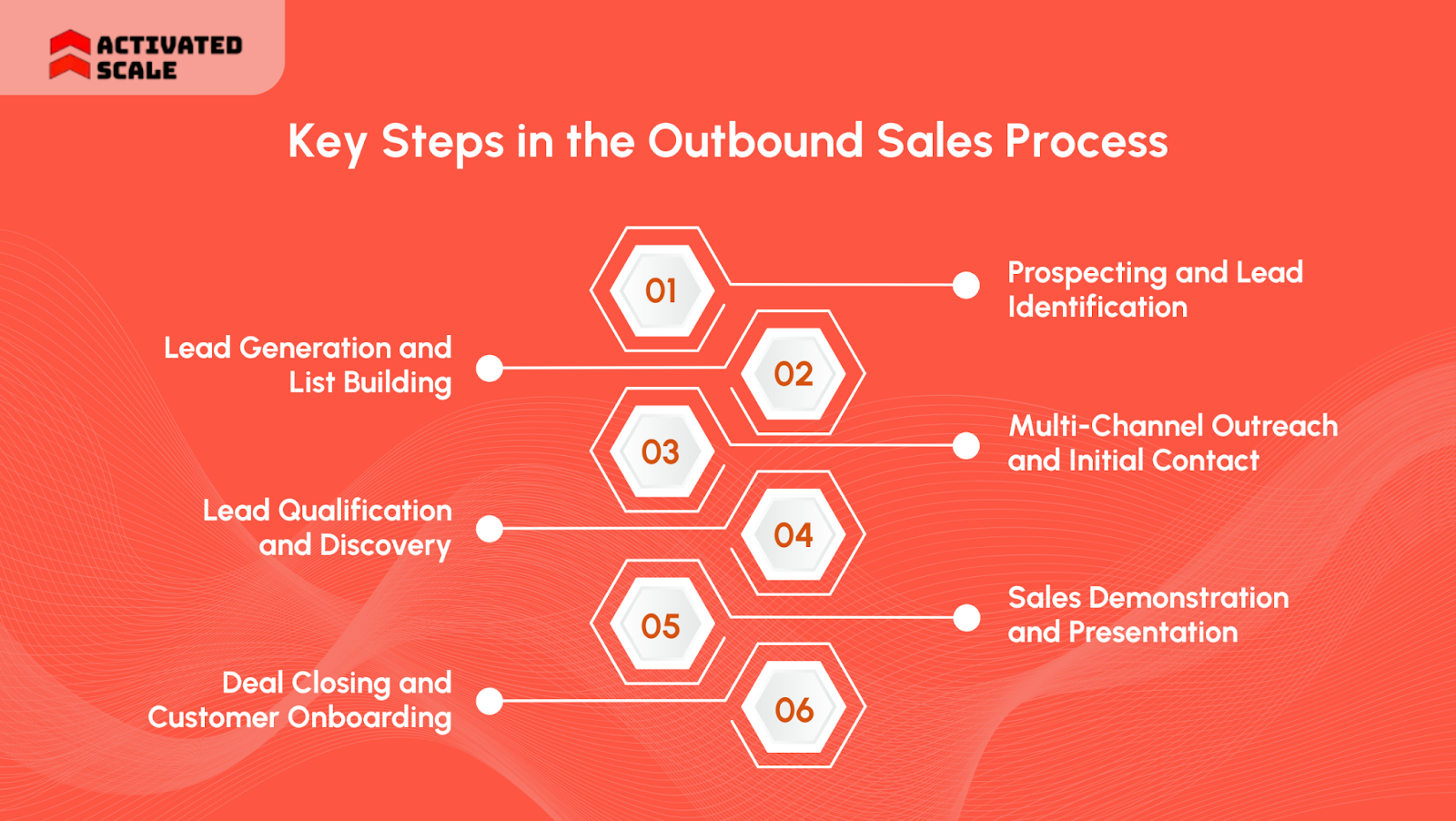
Outbound sales move step by step, where each phase builds on the last to connect with the right people and turn interest into commitment. Knowing these steps helps keep efforts focused and conversations purposeful rather than random.
Here are the key stages that make up the outbound sales process:
1. Prospecting and Lead Identification
Research and identify potential customers who match your ideal customer profile through systematic market analysis, database research, and qualification criteria. This foundational step determines outbound sales success by focusing efforts on high-potential prospects.
Key Tips and Strategies:
- ICP Development: Create detailed buyer personas based on company size, industry, job titles, and pain points to focus prospecting efforts on qualified leads.
- Multi-Source Research: Combine LinkedIn Sales Navigator, company databases, and industry publications to build comprehensive prospect lists with accurate contact information.
- Trigger Event Monitoring: Track company news, funding rounds, leadership changes, and expansion announcements that signal purchasing readiness and conversation starters.
2. Lead Generation and List Building
Compile accurate contact information for qualified prospects, including email addresses, phone numbers, and social media profiles. This step transforms research into actionable outreach lists with verified contact details.
Key Tips and Strategies:
- Contact Verification: Use multiple data sources and verification tools to provide accuracy rates to avoid bounce rates that damage the sender's reputation.
- Segmentation Outbound Sales Strategy: Organize leads by industry, company size, role, and buying stage to promote personalized messaging and appropriate outreach cadences.
- Database Hygiene: Regularly update and cleanse contact lists, removing bounced emails and outdated information to maintain high deliverability and engagement rates.
3. Multi-Channel Outreach and Initial Contact
Initiate contact through strategic combinations of cold calls, emails, LinkedIn messages, and direct mail. This multi-touch approach increases response rates by reaching prospects through their preferred communication channels.
Key Tips and Strategies:
- Channel Sequencing: Design 5-8 touch cadences across email, phone, and social media over 2-3 weeks to maximize engagement without overwhelming prospects.
- Personalization Scale: Reference specific company achievements, industry challenges, or individual roles to demonstrate genuine interest and research rather than mass outreach.
- Value-First Messaging: Lead with insights, industry trends, or relevant case studies instead of product features to establish credibility and earn attention.
4. Lead Qualification and Discovery
Evaluate prospect fit and purchasing readiness using structured qualification frameworks like BANT, CHAMP, or MEDDIC. This step determines which leads deserve continued investment of time and resources.
Key Tips and Strategies:
- Framework Selection: Apply BANT for transactional sales, CHAMP for consultative approaches, and MEDDIC for complex enterprise deals based on sale complexity.
- Discovery Questions: Use open-ended questions about challenges, current solutions, and decision processes to uncover pain points and buying criteria.
- Qualification Scoring: Implement lead scoring systems that rank prospects based on fit, intent, and authority to prioritize follow-up efforts.
5. Sales Demonstration and Presentation
Present your solution through customized demos that address specific prospect needs and use cases. Focus on value delivery rather than feature lists to create an emotional connection and urgency.
Key Tips and Strategies:
- Pain-Point Mapping: Structure demos around identified challenges, showing specific features that solve each problem rather than generic product tours.
- Interactive Engagement: Ask questions throughout the presentation, use prospect names frequently, and encourage participation to maintain attention and gather feedback.
- Outcome Visualization: Present concrete examples, ROI calculations, and success stories from similar companies to help prospects envision implementation benefits.
6. Deal Closing and Customer Onboarding
Secure final commitment through clear next steps, contract execution, and seamless transition to implementation. This step converts qualified opportunities into revenue while setting the foundation for customer success.
Key Tips and Strategies:
- Urgency Creation: Use time-limited offers, seasonal promotions, or implementation deadlines to motivate prompt decisions without appearing manipulative.
- Process Clarity: Outline specific next steps, timeline expectations, and required stakeholder approvals to remove friction from the closing process.
- Onboarding Preparation: Begin implementation planning during the outbound sales process to demonstrate commitment and reduce time-to-value concerns.
When it comes to connecting meaningfully over the phone, you'll find practical tips in these Strategies and Practices for Making Successful Outbound Calls.
Metrics to Measure Outbound Sales Performance
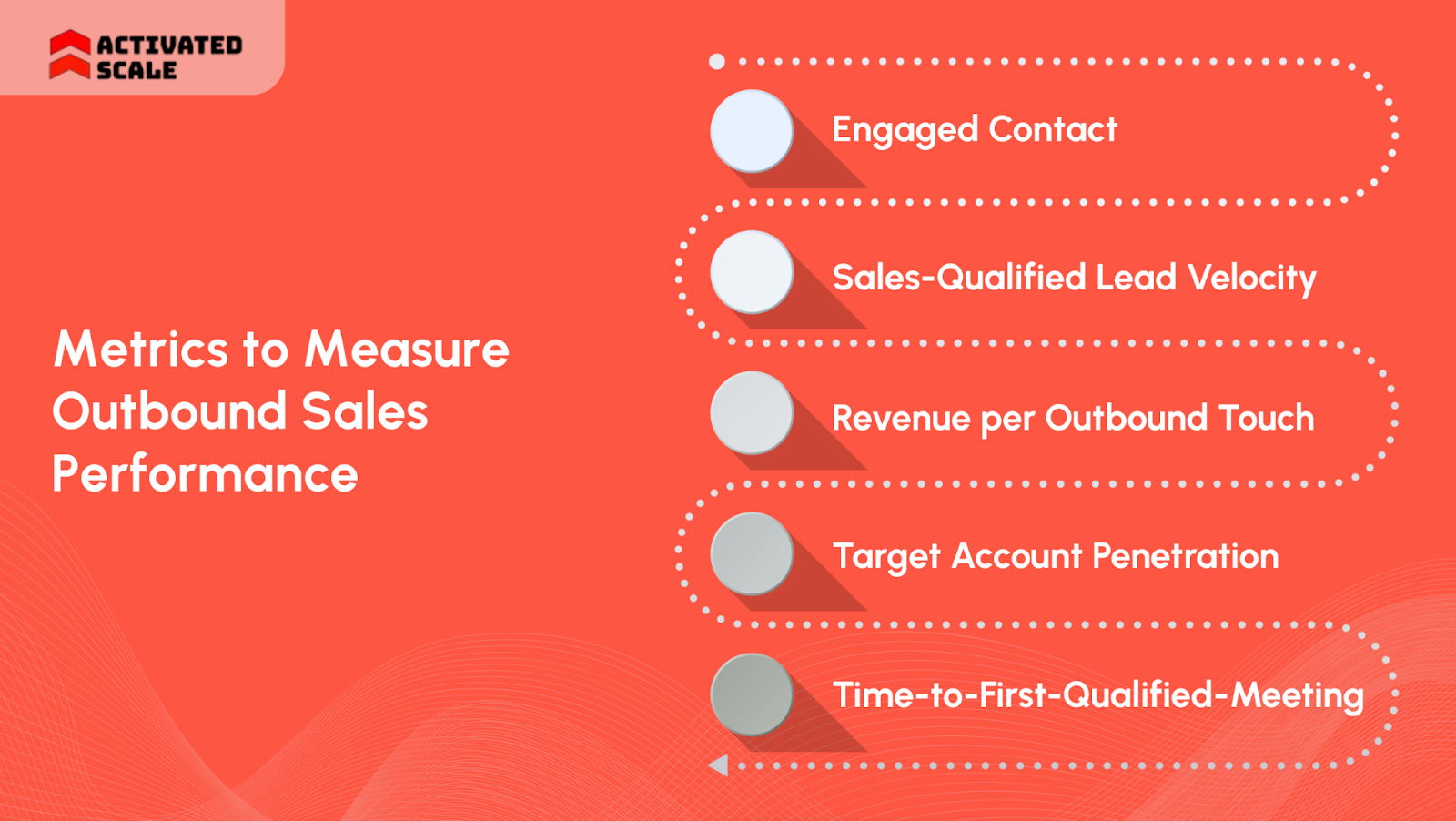
Measuring how outbound sales efforts perform means looking at more than just basic numbers; it requires a clear sense of how interactions turn into real progress and results. Tracking the right metrics gives a grounded picture of which actions produce meaningful connections and returns.
Here are important metrics to keep an eye on:
- Engaged Contact and Follow-Up Success: Measures the percentage of outbound touches leading to meaningful dialogue and conversion after multiple well-timed contacts addressing prospect objections.
- Sales-Qualified Lead Velocity and Stage Advancement: Tracks the speed at which leads qualify and progress through pipeline stages, reflecting outreach precision and engagement effectiveness.
- Revenue per Outbound Touch and Call-to-Close Ratio: Assesses average revenue generated and proportion of outbound calls connected directly to closed deals, quantifying outbound impact on sales.
- Outbound Pipeline Churn and Target Account Penetration: Monitors lead attrition post-qualification and the number of influencers reached within key accounts, indicating targeting accuracy and account reach.
- Time-to-First-Qualified-Meeting and Channel-Specific ROI: Measures speed from outreach to first qualified meeting alongside the return on investment for each outbound channel to prioritize resources effectively.
Best Practices for Efficient Outbound Sales Practice
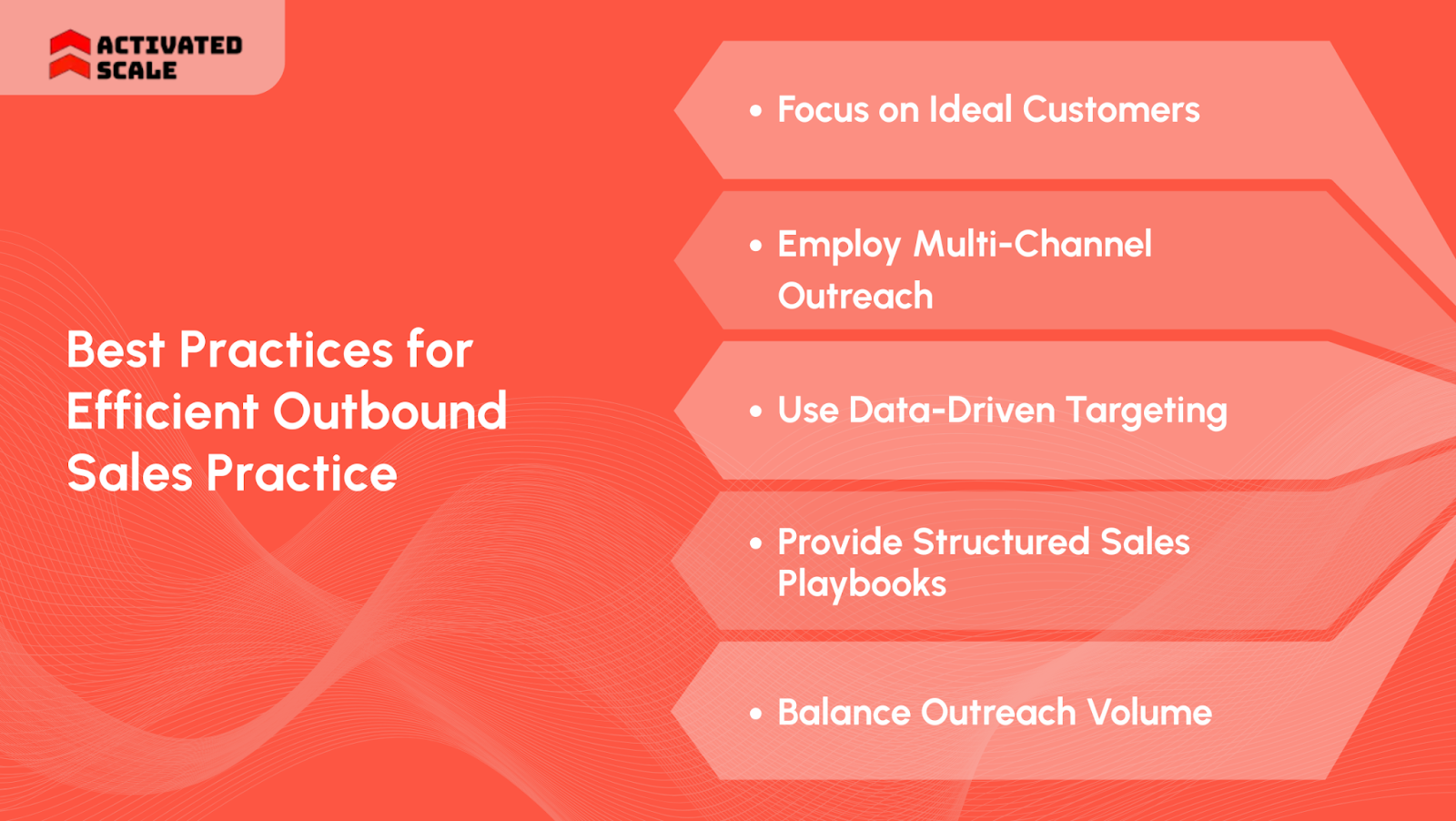
Outbound sales work best when the approach stays focused and flexible, balancing thoughtful targeting with consistent effort. Knowing what keeps outreach clear and connected helps avoid wasted time and strengthens conversations.
Here are some proven best practices to keep outbound sales running smoothly:
- Focus on Ideal Customers with Targeted Messaging: Concentrate outreach on well-defined accounts using clear value propositions that speak directly to prospect pain points and goals.
- Employ Multi-Channel Outreach with Strategic Follow-Ups: Use a combination of calls, emails, and social interactions supported by planned follow-up attempts to boost engagement without overwhelming prospects.
- Use Data-Driven Targeting and Continuous Feedback: Analyze firmographics and behavioral signals to refine lists, while regularly updating messaging based on real interaction insights.
- Monitor Metrics and Provide Structured Sales Playbooks: Track key performance indicators actively and equip sales reps with scripts and templates for confident, consistent outreach.
- Balance Outreach Volume and Quality with Sales-Marketing Coordination: Maintain sufficient contact frequency, providing relevance, aligned with marketing campaigns to improve prospect recognition and openness.
Build a Strong Sales Team With Activated Scale
Activated Scale accelerates building a strong sales team with Outbound Sales by connecting startups with pre-vetted, experienced Fractional SDRs and AEs ready to drive results.
- Pre-vetted Outbound Sales Talent and Marketplace Matching: Activated Scale offers sales professionals with proven experience selling to similar buyers and matches startups with Fractional SDRs and AEs aligned to target buyers and deal sizes, improving pipeline quality and reducing recruitment risks.
- Fast Hiring and Quick Onboarding: Roles are filled within 5-7 days, and new hires are ready to engage prospects and execute strategies within two weeks, accelerating outreach activation and sales cycles.
- Flexible and Cost-Effective Scaling: Organisations can adjust outbound team size easily with no termination fees or long-term contracts, benefiting from transparent pricing and no hidden payroll expenses that lower upfront and ongoing costs compared to in-house or staffing firms.
- Dedicated Sales Support and Fractional SDRs: Personal sales advisors help with tool selection, performance metrics, and coaching, while Fractional SDRs focus on booking meetings through LinkedIn, email, and cold calls to increase qualified leads and outbound opportunities.
- Fractional AEs Managing Full Sales Cycle and Risk Mitigation: Fractional AEs handle prospecting, demos, negotiations, and closing, delivering measurable revenue impact, supported by transparent pricing, no termination fees, and free rematching to provide confidence in staffing fit and performance.
In Conclusion
Outbound sales is a proactive approach that demands persistence and precise execution, yet it also presents challenges that often catch startups off guard. Misaligned goals, communication gaps, and unforeseen expenses can slow growth if not managed early. Recognizing these hurdles helps teams prepare better and improve outcomes in outbound sales initiatives.
Activated Scale simplifies outbound sales recruitment by connecting startups with pre-vetted US-based sales professionals who understand your market. Their flexible model lets you scale your sales team quickly without lengthy delays or heavy overhead. Transparent pricing, fast onboarding, and dedicated support make Activated Scale a reliable partner for building effective outbound sales teams.
Book a consultation today to explore how they can support your startup’s outbound sales growth.
FAQs About Outbound Sales
1. What role does sequencing play in outbound sales?
Sequences with multiple touchpoints over weeks improve response rates by offering varied entry channels rather than one-off contacts.
2. Why is early founder involvement crucial in outbound sales?
Founders lead early outbound efforts to directly understand customer pain points, refine messaging, and avoid ineffective delegation.
3. How does offering quality impact outbound sales?
A clear, compelling offer drives outbound sales success more than just increasing call volume or technology tools.
4. Can outbound sales succeed without strong brand recognition?
Yes, startups can build trust through repeat outreach, relevant messaging, and consistent demonstration of value during outbound sales.
5. What is a common misconception about outbound sales volume?
More outreach doesn’t guarantee better results; optimizing message relevance and delivery timing often yields higher engagement than sheer volume.
The Ultimate Guide to Hiring a Salesperson!
Get the step-by-step guide to hiring, onboarding, and ensuring success!
_edi.png)

